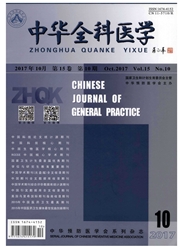

 中文摘要:
中文摘要:
目的探讨“双中心”教学模式在神经病学见习教学中的应用效果。方法将临床专业见习生随机分为实验组(采用“双中心”教学模式)和对照组(沿用传统教学模式),采用问卷调查、理论考核和三站式临床实践考核评估2组教学效果。结果实验组学生的课前预习时间长,翻阅书籍多,辛苦程度也较高,但实验组在课堂气氛、师生互动、调动学习兴趣、提高分析解决问题的能力、提高自学能力、培养临床思维、培养团队协作精神、巩固理论知识及增强个人成就感等方面明显优于对照组(P〈0.05),而且实验组的案例分析题得分、采集病史及临床思维考核成绩也明显高于对照组(P〈0.05),但2组在体格检查方面的成绩差异无统计学意义。结论在神经病学临床见习教学中,“双中心”教学模式明显优于传统教学模式,值得推广应用。
 英文摘要:
英文摘要:
Objective To investigate the utility of double-center teaching pattern (student-centered learning and subject- centered curriculum) in clinical probation of neurology. Methods The students on clinical probation were randomly di- vided into experimental group( the double-center teaching pattern) and control group (the traditional teaching pattern). The teaching effects were evaluated by using questionnaire survey after class, theoretical examination and three station clinical practice examination. Results Compared with the control group, students of the experimental group had longer preview time, more reading, more hard before class, but the experimental group in the classroom atmosphere, teacher- student interaction, the learning-interest, the spirit of teamwork, and to improve the effectiveness of teaching were signifi- cantly better than the control group(P 〈 0.05 ), and scores of the case analysis topic, acquisition history and the clinical thinking examination also significantly higher( P 〈 0.05). But there was no difference in the score of physical examination between two groups. Conclusion Double-center teaching pattern is superior to traditional teaching pattern in the clinical teaching of neurology, it is worthy of popularization and application.
 同期刊论文项目
同期刊论文项目
 同项目期刊论文
同项目期刊论文
 期刊信息
期刊信息
